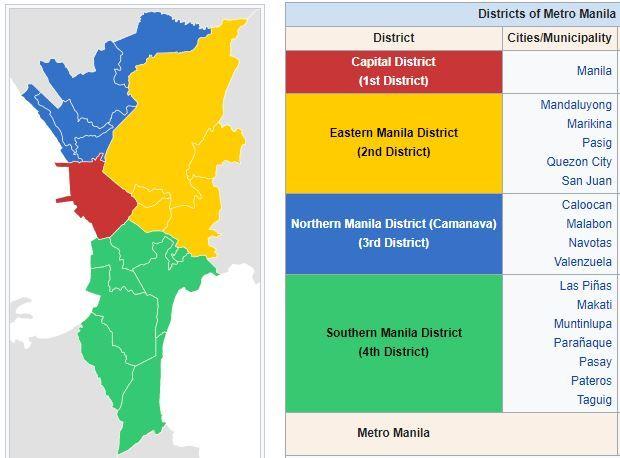
Metro Manila Districts: A Comprehensive Guide to the Heart of the Philippines
Metro Manila, officially known as the National Capital Region (NCR), is the bustling metropolitan area and economic center of the Philippines. It is composed of several vibrant districts, each with its own unique character, culture, and importance. Whether you’re a visitor, new resident, or curious local, understanding the distinct districts of Metro Manila is essential for navigating, exploring, and appreciating this sprawling urban hub.
Understanding Metro Manila’s Geographic and Administrative Structure
Metro Manila consists of 16 cities and one municipality, often divided into smaller district areas for easier management and identity. These districts serve as crucial hubs for government, commerce, culture, and daily living.
- 16 Cities: Manila, Quezon City, Makati, Taguig, Pasig, Mandaluyong, Caloocan, Las Piñas, Malabon, Marikina, Muntinlupa, Navotas, Parañaque, Pasay, San Juan, Valenzuela.
- 1 Municipality: Pateros.
Top Metro Manila Districts and Their Unique Features
1. Manila City Districts
The historic core of Metro Manila, Manila City, is divided into several districts, including Intramuros, Binondo, Ermita, and Malate. Each district offers a unique glimpse into Philippine history and culture:
- Intramuros: Known as the “Walled City,” it is the oldest district, rich with colonial Spanish architecture and landmarks.
- Binondo: The world’s oldest Chinatown, famous for its bustling markets and authentic Chinese cuisine.
- Ermita & Malate: Popular cultural and entertainment districts with museums, parks, and nightlife.
2. Quezon City
The largest city by population in Metro Manila, Quezon City is home to government institutions, universities, and vibrant residential neighborhoods.
- Major districts like Diliman host the University of the Philippines and government offices.
- New Manila offers a mix of historical residences and growing commercial hubs.
- Entertainment and shopping centers are concentrated in districts like Cubao and Timog Avenue.
3. Makati City
Known as the financial center of the Philippines, Makati is synonymous with upscale business districts, nightlife, and shopping.
- Makati Central Business District (CBD): Houses multinational companies, embassies, and luxury hotels.
- Rockwell Center: An upscale residential and commercial development with retail and dining options.
4. Taguig
Taguig has rapidly evolved with the rise of Bonifacio Global City (BGC), a modern financial and lifestyle district that rivals Makati.
- Bonifacio Global City (BGC): Characterized by high-end offices, malls, art installations, and trendy restaurants.
- Fort Bonifacio: Residential and commercial spaces designed to accommodate the growing urban population.
5. Pasig
Pasig City blends residential areas with commercial centers and the significant Ortigas business district.
- Ortigas Center: A premier commercial and business district shared among Pasig, Mandaluyong, and Quezon City.
- It’s known for shopping malls like SM Megamall and various corporate offices.
Metro Manila Districts at a Glance
| District | Key Features | Popular Attractions |
|---|---|---|
| Intramuros (Manila) | Historic, Spanish colonial architecture | Fort Santiago, San Agustin Church |
| Binondo (Manila) | Oldest Chinatown, vibrant markets | Binondo Church, Ongpin Street |
| Quezon City – Diliman | Government & education hub | UP Diliman, Quezon Memorial Circle |
| Makati CBD | Financial district, luxury shopping | Ayala Center, Greenbelt |
| BGC (Taguig) | Modern lifestyle, business district | Bonifacio High Street, Terra 28th Park |
| Ortigas Center (Pasig) | Business & shopping hub | SM Megamall, The Podium |
Benefits of Knowing Metro Manila Districts
Understanding Metro Manila’s districts offers several benefits for residents, travelers, and investors:
- Efficient Navigation: Planning trips and daily commutes becomes easier with district awareness.
- Investment Insights: Real estate and business investments greatly benefit from knowing district characteristics.
- Cultural Enrichment: Appreciating the unique heritage and lifestyle each district offers enhances one’s Metro Manila experience.
Practical Tips for Exploring Metro Manila Districts
- Use Ride-Hailing Apps: Apps like Grab can help navigate the wide urban areas safely and efficiently.
- Visit During Off-Peak Hours: Metro Manila traffic can be challenging, so planning your visit early or late helps save time.
- Explore on Foot in Historic Districts: Areas like Intramuros are best experienced by walking to absorb the local culture and architecture.
- Stay Hydrated and Comfortable: The tropical climate means wearing light clothing and bringing plenty of water during excursions.
Case Study: Bonifacio Global City (BGC) – Taguig’s Evolution
BGC is a prime example of urban redevelopment in Metro Manila. What was once a military base was transformed into a premier commercial and residential hub attracting local and international businesses, luxury retail, and arts and culture. Today, BGC sets the standard for planned urban developments in the Philippines, combining sustainability efforts with modern architecture and public spaces.
Conclusion: Embracing the Diversity of Metro Manila Districts
Metro Manila is not just a city but a dynamic collection of districts, each with a distinct flavor and purpose. From the historic Intramuros to the ultra-modern BGC, these districts reflect the complexity and vibrancy of Filipino life. Whether you’re visiting the capital for business, culture, or leisure, familiarizing yourself with Metro Manila districts unlocks a more enriching and seamless experience.
Ready to explore or settle in Metro Manila? Dive into its districts and discover the heart of the Philippines’ metropolitan life!






